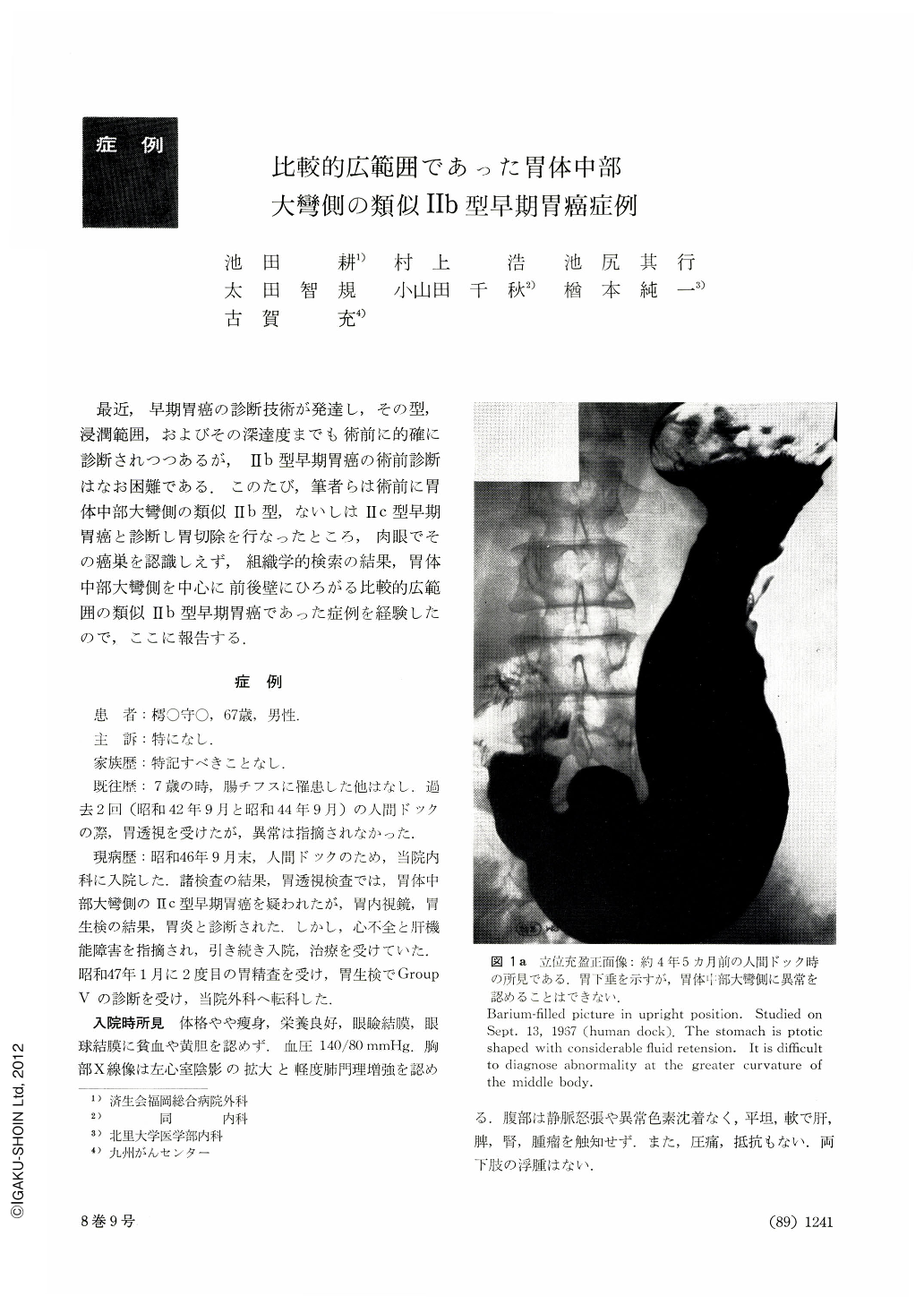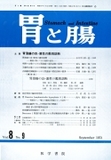Japanese
English
- 有料閲覧
- Abstract 文献概要
- 1ページ目 Look Inside
最近,早期胃癌の診断技術が発達し,その型,浸潤範囲,およびその深達度までも術前に的確に診断されつつあるが,Ⅱb型早期胃癌の術前診断はなお困難である.このたび,筆者らは術前に胃体中部大彎側の類似Ⅱb型,ないしはⅡc型早期胃癌と診断し胃切除を行なったところ,肉眼でその癌巣を認識しえず,組織学的検索の結果,胃体中部大轡側を中心に前後壁にひろがる比較的広範囲の類似Ⅱb型早期胃癌であった症例を経験したので,ここに報告する.
Case: a man 67 years of age.
Chief complaint: none.
At a periodic check-up of his health, an abnormality was noticed during fluoroscopy on the greater curvature side of the mid-body. Subsequent workup led us to suspect either IIc or IIb-like lesion in the above location together with a suspicion of IIa type early cancer directly below the cardia. Until we were able to obtain the results of biopsy, it was hard to distinguish the lesion in the mid-body from a picture of gastritis. Gross observation of the excised stomach prevented us from discriminating this lesion, considered to represent the chief cancer lesion, from the surrounding mucosa. Findings of both x-ray and endoscopy were more helpful in locating cancer nests.
Histologically, the lesion in the mid-body extended to both walls, occupying an area measuring about 5.3 by 3.2 cm, with the greater curvature side of the mid-body as its central location. The depth invasion was mostly confined to m, with slight partial involvement of sm. It was well-differentiated tubular adenocarcinoma. The elevation just below the cardiac segment proved to be submucosal aberration of the proper gastric glands. This fact made us keenly aware of the need of close-up observation and close-up biopsy of lesions not only in or near the pylorus but also in the cardiac portion. Many a II b subtype lesion would often be detected in the antrum, gastric angle and lower body, all relatively free from mucosal creases, but a II b subtype lesion occurring in the greater curvature side is a rarity. When findings of both x-ray and endoscopy are duly taken into account, the present case is believed to belong to IIb-like early cancer with predominant IIc-like element. Cancer lesion in the present case evolved in a place where creases are physiologically abundant, so that it was all the more difficult to grasp the extension of cancer accurately. Scrupulous judgement is therefore required.

Copyright © 1973, Igaku-Shoin Ltd. All rights reserved.


